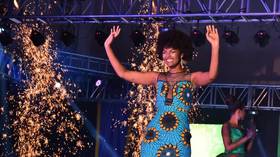‘Needs fine-tuning, but no glitches’: India’s FIRST EVER trial of facial recognition software at polls reported success

Officials in the Indian state of Telangana, the first in the country to use facial recognition to verify voters, have said the software still needs to be honed but has proven fairly accurate with up to an 86 percent success rate.
The technology was tested on a sample of some 4,200 voters who went to cast a ballot in the municipal elections on January 22. The trial was limited to only 10 polling stations in the Kompally municipality of the Medchal-Malkajgiri district with just over 7,000 eligible voters.
In preparation for the trial, each of the booths was fitted with a smartphone and all the voter ID card data was inputted into the system. When a voter entered one of the booths, a polling official would take a photo of that person for the system to confirm their identity.
A red check mark meant that the photo did not produce a match, while a green check mark signaled a positive identification.
Also on rt.com India plans to launch LARGEST facial recognition system to target criminals as country’s murder rate drops to lowest in DECADESThe system has posted a success rate of 65 to 86 percent, a senior Telangana State Election Commission (SEC) official said, as quoted by the Indian Express on Sunday. If the algorithm failed to recognize a voter, they were not automatically shown the door, the official said, noting that the software was secondary to the traditional registration procedure.
While that accuracy rate might calm the fears of privacy advocates, who have repeatedly raised concerns that the collected data is vulnerable to misuse by the government, the official said that the major takeaway from the experiment is that the software works in principle, although some minor adjustments are needed.
“We believe that as a technology, we have established that it works. It needs to be fine-tuned, but there were no glitches in the technology”
The commission attributed the algorithm's failure in the cases where it did not find the match to poor lightning at the polling stations, as well as to the substandard quality of the photos themselves.
Brushing off concerns over potential privacy violations, the commission said that it would delete all the photos in the aftermath of the trial, noting that the data was protected by encryption to avoid leaks.
While it’s unclear if or when facial recognition software will be introduced at elections on a nationwide scale, the Indian authorities argued that the technology, which proved itself handy in combating welfare fraud by making sure that pensioners who receive government handouts are alive, will help to eradicate the practice of impersonation and proxy voting at the polls.
Think your friends would be interested? Share this story!














